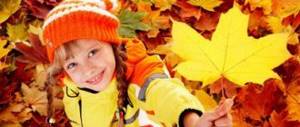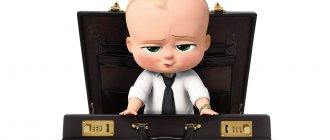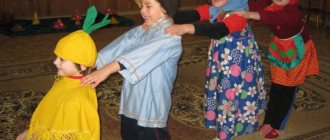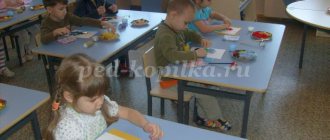When it comes to the characteristics of a person’s personality, his beliefs and ideological concepts, the word “creed” is often heard. What it is? The word comes from the Latin credo, which means “I believe.” Consequently, a credo is a person’s personal beliefs, what he believes in, what guides him in life, a kind of motto. They say that a profession leaves its mark on a person. The life attitudes of a law enforcement officer differ from the beliefs of a teacher.
What the pedagogical credo of a preschool teacher can be expressed in, and how to formulate it for yourself, we will tell you in our article.
Why is this necessary?
The current stage of development of the entire education system takes the work of a teacher to a completely new level. Thinking, analyzing, realizing, drawing conclusions are the most important skills of a teacher and educator. This is the most important requirement of the federal state educational standard. Before going to children, understand yourself, understand your goal, mission, task, that is, every teacher must formulate his credo.
Certification of teaching staff, which is carried out regularly, also puts forward one of the requirements for the first and highest qualification category - self-analysis. Almost every certification portfolio reveals a pedagogical credo. A preschool teacher, school teacher or other specialist is united by a love for children and his profession, but each one identifies something important for himself, characteristic specifically for his activity.
Whatever requirements are put forward by state standards, educational programs, certification procedures and the administration of educational institutions, first of all, the teacher himself needs to understand his professional credo for self-development and self-knowledge.
Methodological development on the topic “Pedagogical credo of a teacher”
Teacher's pedagogical credo
“By teaching children, I learn myself and live my childhood many times over”
These words became the motto of my whole life. I have been working in kindergarten for fifteen years and I don’t want any other profession for myself. The teacher is like a potter, in whose hands soft, pliable clay turns into an elegant vessel. The teacher’s task is to fill this vessel with goodness, creativity, knowledge and skills. I look at the world through the eyes of children and in each of them I see a personality.
Depending on the circumstances, the teacher has to play different roles: he is for the children and a teacher who knows everything, teaches everything; both a playmate and a loved one who will understand everything and help in difficult times. A teacher is a sage to whom children go for advice.
And who is a “modern educator”?! I think this is a man who lives
in his profession, in which he achieves significant success, receives the predicted result. And, at the same time, he is a creative person who strives to find himself.
We all understand how quickly the world around us is changing, modern technologies are covering us headlong. To keep up with the times, it is necessary to meet the criteria of a person of the new generation. You need to use all possible sources of information, keep abreast of the latest trends and events. It is necessary to use all the fruits of the latest achievements, and especially new products in the field in which we work.
The world is changing, children are changing, which, in turn, puts forward new requirements for the qualifications of a teacher. Educators need to master modern educational technologies, with the help of which they can implement the requirements of new federal state educational standards. These are well-known technologies of problem dialogue, game pedagogical technologies, activity technologies, as well as ICT technologies. Now, in connection with the implementation and implementation of the Federal State Educational Standard in preschool institutions, teachers are provided with even greater scope for the development of creative and design capabilities, for self-development and self-realization.
The problem of speech development and speech education is one of
the most significant
in a preschool institution. Working in a speech therapy group, I implement the topic of my self-education “Oral - folk art in the development of speech activity of preschool children.” Through oral folk art, a child not only masters his native language, but also masters its beauty and brevity, becomes familiar with the culture of his people, and gets his first impressions of it. I use all types of oral folk art both in GCD and in special situations.
In my work I widely use logostories. Logostales -
This is a holistic pedagogical process that promotes the development of all aspects of speech, the education of moral qualities, as well as the activation of mental processes (attention, memory, thinking, imagination).
Using logostories, you can solve correctional problems :
- create a favorable environment for the child’s speech activity and creativity in order to increase the effectiveness of play motivation for children’s speech;
- develop all aspects of the speech functional system in a form that is entertaining for preschoolers;
- develop the psychological basis of speech, the relationship between the visual, auditory and motor analyzers;
— to carry out the cooperation of the teacher-speech therapist with children and with each other on the basis of a person-oriented model of interaction between participants in the educational process, to create an atmosphere of mutual understanding and mutual assistance.
Preschoolers are born researchers who learn everything firmly and for a long time when they hear, see and do it themselves
. They experience great joy, surprise and even delight from their small and large “discoveries”, so preschoolers are happy to engage in educational and research activities.
To develop the child’s personality, his cognitive and creative abilities, I pay a lot of attention to project
activities.
The project-based teaching method is innovative for preschool institutions. This technology, like no other, supports children's cognitive initiative, introduces children to sociocultural norms, traditions of the family, society and state, taking into account the ethnocultural situation of children's development in accordance with the Federal State Educational Standard for preschool education.
To implement the project “The Magic World of Salt” and develop interest in the cognitive and research activities of preschoolers, for starters, I designed a subject-development environment -. And now my children and I are conducting experiments here using appropriate equipment.
I understand my task - to create conditions so that children learn as much as possible from what surrounds them. All this happens in joint activities with the teacher and peers. The wider and more versatile this activity is, the richer the life experience of preschoolers.
With great pleasure, children tell their parents about their discoveries and ask them to carry out experiments at home. It is important for a child that his mom and dad support his interests, so I involve parents in active assistance and interaction. I suggest that parents, together with their children, not only carry out a series of experiments with water, air, and natural materials, but also help in the design of any collection.
To achieve high quality education and upbringing of children at work, I also actively use modern educational technologies such as:
— person-oriented technologies;
— correctional and developmental technologies;
— health-saving technology;
— technology of developmental education;
- gaming technologies.
I believe that in modern pedagogical activities, special attention should be paid to the implementation of educational activities based on active interaction with society and family
. I try to widely involve parents in interaction, create conditions for the formation of family values, rapprochement and unity, fostering a sense of tolerance, active cultural and sports leisure. Organize holidays where parents, along with their children, perform various creative tasks.
To ensure the pedagogical activities of the kindergarten in cooperation with the primary school, in order to maintain continuity,
I conduct excursions for children to the primary classes of the secondary school in the village of Polevoy. In this way, children get to know their future teachers, the environment at school, and immerse themselves in a new atmosphere in the educational space.
While working as a teacher, I realized that the main thing in my work is “to burn, not to smolder,” otherwise there is no point in working in a kindergarten. Search, initiative and creativity are my obligatory companions on the thorny path of a teacher. Getting rid of outdated stereotypes, asking more of yourself, working with full dedication, replenishing and updating your knowledge - this is how I understand the requirement of the time and try to meet this requirement. The teacher must constantly improve his skills, using the achievements of pedagogical science and best practice.
This is how I improve my skills through advanced training courses, use Internet resources, get acquainted with work experience with colleagues and share my developments, attend seminars, and engage in self-education.
A teacher must be a creative person - this is always interesting. The teacher is an example. And to be one means to work hard and hard. And the main assessment of my work lies ahead. This is the respect of the team, the successful educational activities of my students and their future life in society.
A modern teacher must be distinguished by mobility and creativity, as well as a high level of pedagogical culture, and be attentive to each child, because every
the child is talented and gifted.
The teacher must, with his kindness and attentive attitude towards the child, pick up the key to his child's soul. And only then talents and inclinations be revealed
.
I'm proud of my profession
Because I warm a person’s soul,
Because I can understand children
And I live my childhood with them.
Thank you for attention!
How to find your credo as a teacher
You can just think about your work for quite a long time. It takes even longer to analyze what has been done. How to come to the main thing, to the essence? It may be worth reflecting on the most important issues in your work. Write down the answers in writing on a piece of paper, re-read them, highlight the most important ones. You can rank your beliefs numbered from most important to least important.
We offer questions for reflection that will help you find and formulate the pedagogical credo of a preschool teacher.
- What does it take to raise children?
- Why does a child need a teacher?
- How to raise and develop a child?
- Why can you be proud of your chosen profession?
- What should a modern educator be like?
- What do I rely on in my teaching work?
- What should a teacher believe?
Learning best practices
Getting to know the works of great teachers of the past and the best authors of our time always provides rich food for thought. Thoughts on education expressed by the classics of foreign and domestic pedagogy Ya.A. Komensky, I.G. Pestalozzi, K.D. Ushinsky, A.S. Makarenko, V.A. Sukhomlinsky, L.N. Tolstoy, have not lost their relevance to this day. Re-reading their statements, today you understand the importance of the problem of education and the personality of the educator, which no one can ever replace.
The best quotes should be entered into the diary, from which the pedagogical credo of the preschool teacher will then be formed - example by example, phrase by phrase, word by word. Folk proverbs and sayings, any thoughts and statements that you liked or vice versa, but made you think, be sure to save them by writing them down somewhere. They provide the ground for the growth of one's own truths.
Thoughts about the profession
The pedagogical credo of a preschool teacher is the motto of the work, so it should sound short but clear, figurative but strong, generalized but individual. Here are examples of such mottos:
- “The personality of the teacher means everything in the matter of education.” (K.D. Ushinsky)
- If you do something, do it creatively! Otherwise, why?
- The teacher, like a magician, illuminates the world of childhood with kindness.
- It can take a long time to explain something, but it’s faster to teach it in practice.
- Each child has his own characteristics and is talented in his own way. The teacher’s task is to find this talent and develop it.
- Tell the child - and he will forget, explain - and he will remember, let the child do something himself - and he will understand.
- If the teacher believes in a fairy tale, the children will believe in it too.
- Create, create, invent for children and with them.
- The teacher is always young, because he lives in childhood.
- It takes a long time to wait for the results of a teacher’s work, but how good they are!
- Loving children and your job is the most important thing.
- The educator contributes to the future of life on the planet.
- “You can’t learn anything without an example” (Ya. A. Komensky).
- If you don’t make big demands on your child, you shouldn’t expect big results.
When choosing your professional motto, remember that the pedagogical credo of a preschool teacher should briefly and clearly show the main guideline in the work.
Making a portfolio for a kindergarten teacher
For a teacher’s portfolio for the highest category, it is necessary to collect the main achievements:
- Participation in events. Any group activities are recorded and filed in a folder.
- Research work. Many teachers also conduct research work at the same time. In this case, the results and research methods are also filed in a folder.
Title page
The purpose of the title page is to create a first impression. Just by looking at him, the expert commission must understand what kind of person is in front of them, what he wants to achieve and what his attitude to work is.
In this case, it is easier to order a ready-made portfolio for a kindergarten teacher for category 1. It is checked with particular scrupulousness and any errors will immediately reduce the likelihood of obtaining qualifications.
Basic personal information is written on the title page:
- Full name of the preschool educational institution employee. Be sure to include no abbreviations or errors.
- Current qualifications, if you already have them.
- Position held.
- The period in which the folder was compiled.
A teacher's photo is considered optional, but the committee looks more favorably on applicants who include one.
If you decide to add a photo, it is better if it is taken by a professional photographer in a studio or in a kindergarten. Ordinary amateur photographs will not be suitable, as they will only spoil the impression of the candidate.
Portfolio content
The portfolio consists of 6 sections that must be followed.
Business card/Title page
It was described above. But, in addition to basic data, it may include the following:
- Essay. A free-form essay is needed to show the teacher’s aspirations and goals. There is no need to adhere to dry scientific language.
- Creed of a kindergarten teacher. Also a design element that is not required, but desirable. It reflects the life position of the teacher in relation to his work and children. The kindergarten teacher's motto for the folder can be invented independently or borrowed. For example, quotes from famous teachers like Makarenko, Montessori and others. In case of borrowing, you must indicate authorship.
- Hobby and family. It is also better to indicate this data. This way you can show yourself as a versatile and useful person for education.
Below you can see a sample.
Documentation
Here you need to specify only 2 documents:
- Training. This indicates the date when the courses were held, their name, number of hours and documentation received (certificate, certificate).
- Certification. Date of certification, category received and validity period.
Methodological activities of teachers
An important section that, ideally, should be completely filled out. Here you need to indicate participation in methodological activities, such as the creation of innovative methods, publications, and so on.
Teacher's achievement
The activities carried out and the results achieved are indicated here.
Pedagogical piggy bank
Divided into two subsections:
- Work with children. Notes of lectures held with children, forecasts for the subsequent education and development of the group are recorded. Basically, this subsection is intended for the creative life of the kindergarten group and their intellectual development.
- Working with parents. A subsection where lectures and consultations for parents are collected.



